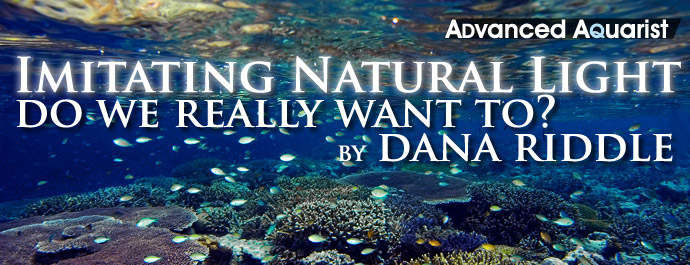- Joined
- May 16, 2017
- Messages
- 1,178
- Reaction score
- 1,050
So I have this article about PAR and BTA/bubble time anemones / entacmaea quadricolor at depth.
I'm especially interested in this chart.

Am I interpreting it correctly in saying:
- PAR in open water at 0m is like 1800 (as we generally measure this in the reef hobby) on a presumably clear day around noontime. It goes down to 600 PAR at 10m, and only gets to 300 (something many people recommend as a "high amount of light) at around 30m. (which is already quite deep. You'll start seeing relatively few photosynthetyic corals by this depth)
- PAR at even 40m at this site (Aqaba, Jordan - I presume with very clear water, much like the Kona Coast or places like Osprey Reef in the Coral Sea where there's been a lot of "mesophotic reef" research) is still around 150.
(this is actually what I'm most interested: how to roughly capture a certain form of reef ecosystem in the aquarium. In this case, if I wanted a "mesophotic biotope" with the cnidarians you might find at such sites at 40m - e.g. acropora enchinata, granulosa, carduus, BTAs - I might want to keep PAR at no less than 150 for at least a few hours a day. Assuming that the specimens I get from, say, ORA can actually be adapted to thrive in such light levels, which is a completely separate question.
- BTAs can be found in areas that have from 50-700 PAR at noontime in the wild
- ergo, the amount of PAR that most hobbyists strive for in our tanks is actually not that much compared to a wild reef in ideal clear light conditions. (I won't go into the question of "should we seek 1000 PAR for, say, Acropora millepora, and how long we should do so", because I think that question is basically settled by practical experience)
I'm especially interested in this chart.
Am I interpreting it correctly in saying:
- PAR in open water at 0m is like 1800 (as we generally measure this in the reef hobby) on a presumably clear day around noontime. It goes down to 600 PAR at 10m, and only gets to 300 (something many people recommend as a "high amount of light) at around 30m. (which is already quite deep. You'll start seeing relatively few photosynthetyic corals by this depth)
- PAR at even 40m at this site (Aqaba, Jordan - I presume with very clear water, much like the Kona Coast or places like Osprey Reef in the Coral Sea where there's been a lot of "mesophotic reef" research) is still around 150.
(this is actually what I'm most interested: how to roughly capture a certain form of reef ecosystem in the aquarium. In this case, if I wanted a "mesophotic biotope" with the cnidarians you might find at such sites at 40m - e.g. acropora enchinata, granulosa, carduus, BTAs - I might want to keep PAR at no less than 150 for at least a few hours a day. Assuming that the specimens I get from, say, ORA can actually be adapted to thrive in such light levels, which is a completely separate question.
- BTAs can be found in areas that have from 50-700 PAR at noontime in the wild
- ergo, the amount of PAR that most hobbyists strive for in our tanks is actually not that much compared to a wild reef in ideal clear light conditions. (I won't go into the question of "should we seek 1000 PAR for, say, Acropora millepora, and how long we should do so", because I think that question is basically settled by practical experience)
Last edited:




















